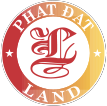SOYBEAN MEAL
CBOT Soybean Meal
CONTRACT SPECIFICATION
| Trading Screen Product Name | CBOT Soybean Meal | ||||
| Commodity Code | ZME | ||||
| Contract Size | 100 short tons (~ 91 metric tons) / lot | ||||
| Price Quotation | US dollar and cents/ short tons | ||||
| Trading Hours | Monday-Friday Session 1: 08:00 A.M - 08:45 P.M Session 2: 09:30 P.M - 02:20 A.M (the next day) |
||||
| Minimum Price Fluctuation | 0.1 USD / short ton | ||||
| Contract Series | January, March, May, July, August, September, October, and December. | ||||
| Delivery Registration Day | The fifth business day prior to the First Notice Day | ||||
| First Notice Day | The last business day of the month prior to the contract month. | ||||
| Last Trading Day | The business day prior to the 15th calendar day of the contract month. | ||||
| Margin | As MXV required | ||||
| Position Limit | As MXV required | ||||
| Price Limit |
|
||||
| Settlement Method | Deliverable | ||||
| Quality Standards | Soybean Meal meeting the requirements listed in the CBOT Rules and Regulations. |
QUALITY STANDARDS
In accordance with the regulations of Soybean Meal traded on Chicago Board of Trade (CBOT).
Product infomation
Product introduction
Commercial grade soybean meal is made by grinding soybean seeds and reducing the oil content of the product using hexane or a similar hydrocarbon solvent. Soybean meal is an important product in the livestock industry to supplement protein because it contains up to 50% protein. It is also a favorite product of commodity traders.
In Vietnam, soybean meal is also an important imported material in the livestock industry. Therefore, this is also a product with high trading liquidity in the commodity market.
In Vietnam, soybean meal is also an important imported material in the livestock industry. Therefore, this is also a product with high trading liquidity in the commodity market.
Characteristics
Soybean is a widely grown food crop due to its adaptability and high economic efficiency. Soybean products are also very diverse from direct use to processing.
The homeland of soybean is Southeast Asia, but America is the main producer of this product with leading countries such as the United States (accounting for about 34% of global production), Brazil (accounting for about 33 percent of global production), %), Argentina (about 15% of production). In Asia, the two largest soybean producing countries are China and India.
As for soybean meal, China is the leading producer of soybean meal with 72.86 million tons, 1.7 times higher than the United States which is the second country in the 2017-2018 crop year.
The homeland of soybean is Southeast Asia, but America is the main producer of this product with leading countries such as the United States (accounting for about 34% of global production), Brazil (accounting for about 33 percent of global production), %), Argentina (about 15% of production). In Asia, the two largest soybean producing countries are China and India.
As for soybean meal, China is the leading producer of soybean meal with 72.86 million tons, 1.7 times higher than the United States which is the second country in the 2017-2018 crop year.
Sowing and harvesting
Normally, soybeans usually start to be planted when the weather is warm, grown during the summer and harvested when the weather starts to get cold.
In the US, pine soybeans are usually planted around May to early June and harvested in the autumn from late September to late November. Farmers can plant a little earlier or later depending on the situation. weather pattern. In the two southern hemisphere countries, Brazil and Argentina, on the contrary, farmers usually start planting around September to December and harvest from February to June of the following year.
In the US, pine soybeans are usually planted around May to early June and harvested in the autumn from late September to late November. Farmers can plant a little earlier or later depending on the situation. weather pattern. In the two southern hemisphere countries, Brazil and Argentina, on the contrary, farmers usually start planting around September to December and harvest from February to June of the following year.
Product
In soybean seed, up to 38-45% is protein, 15%-20% lipid, and many kinds of mineral salts and carbohydrates. So soybean is considered a quality food crop. 85% of the world's soybeans are processed into soybean oil (soybean oil) or soybean meal (soybean meal).
To extract soybean oil, the peas are ground, peeled, rolled into flakes, soaked in solvents, and put into distillation. Crude soybean oil is refined and blended to produce various products. The remaining material of the bean seed, after being separated to get the oil, is dried and ground into soybean meal. Soybean meal contains up to 50% protein, so it is used as a protein supplement for livestock. An estimated 97% of soybean meal is used as animal feed.
To extract soybean oil, the peas are ground, peeled, rolled into flakes, soaked in solvents, and put into distillation. Crude soybean oil is refined and blended to produce various products. The remaining material of the bean seed, after being separated to get the oil, is dried and ground into soybean meal. Soybean meal contains up to 50% protein, so it is used as a protein supplement for livestock. An estimated 97% of soybean meal is used as animal feed.
Situation of production in the world and consumption
In the 2018-19 crop year, China continues to be the world's largest soybean importer with a total output of up to 88 million tons, accounting for half of the world's import volume. Currently, China has not been able to proactively supply this product to a market of 1.3 billion people. In second place is the EU region.
In terms of exports, Brazil is the leading power in soybean exports, accounting for 56% of the world, ranking second is the United States, accounting for about 29%.
China imports soybeans mainly from Brazil and the United States. After the trade tensions, China sharply reduced imports from the US and increased imports from Brazil and Argentina. However, recently, after many signs of failure to reach trade agreements, China continues to buy strongly soybean products from the US.
Along with imports and domestic supply, China has become the largest producer and consumer of soybean meal due to huge demand from the livestock and fishery industries (see figure 4). Next is the United States and the EU region
In terms of exports, Brazil is the leading power in soybean exports, accounting for 56% of the world, ranking second is the United States, accounting for about 29%.
China imports soybeans mainly from Brazil and the United States. After the trade tensions, China sharply reduced imports from the US and increased imports from Brazil and Argentina. However, recently, after many signs of failure to reach trade agreements, China continues to buy strongly soybean products from the US.
Along with imports and domestic supply, China has become the largest producer and consumer of soybean meal due to huge demand from the livestock and fishery industries (see figure 4). Next is the United States and the EU region
Major factors influencing soybean meal market:
- The US-China Trade Agreement and Conflict.
- Weather Events: Inclement weather around the world, especially in local cultivation regions can affect supply.
- The USDA World Agricultural Supply and Demand Estimates (WASDE) report provides comprehensive monthly forecasts, which often turn the market in an unexpected direction.
- Grain Stock Report: Provides information on soybean stocks.
- Events related to the livestock industry: Trade, epidemics...
- Trade, political, bilateral, and multilateral events related to agriculture
- Weather Events: Inclement weather around the world, especially in local cultivation regions can affect supply.
- The USDA World Agricultural Supply and Demand Estimates (WASDE) report provides comprehensive monthly forecasts, which often turn the market in an unexpected direction.
- Grain Stock Report: Provides information on soybean stocks.
- Events related to the livestock industry: Trade, epidemics...
- Trade, political, bilateral, and multilateral events related to agriculture











